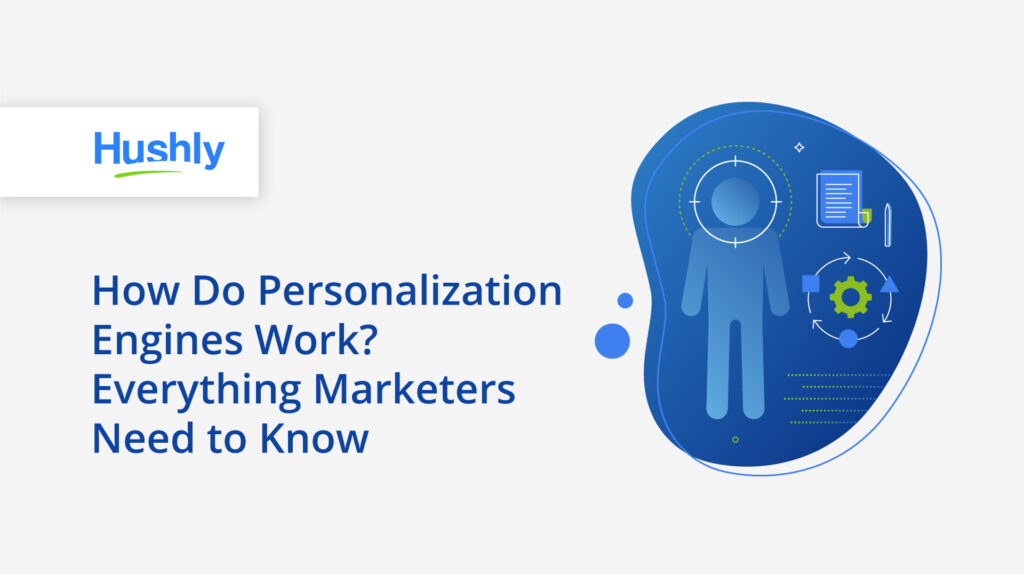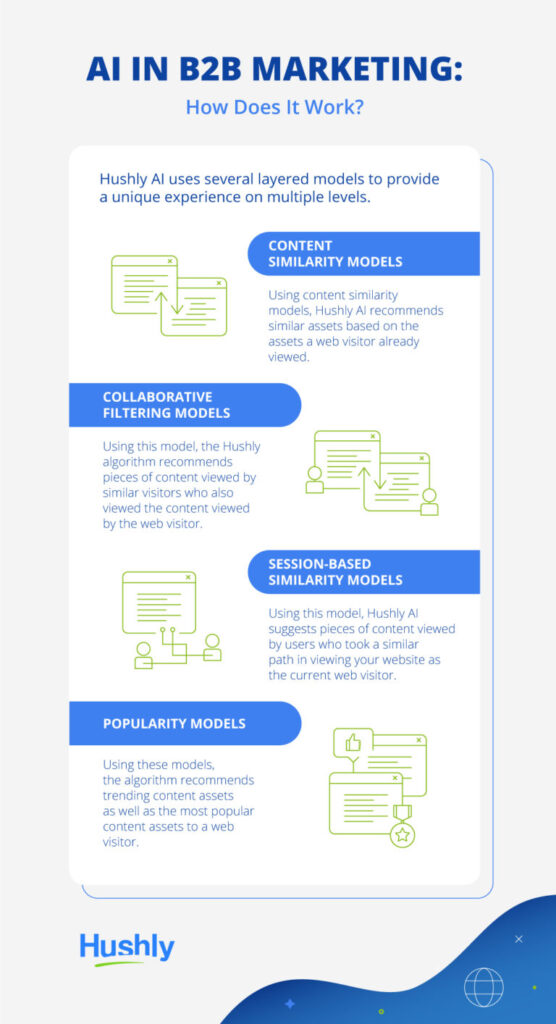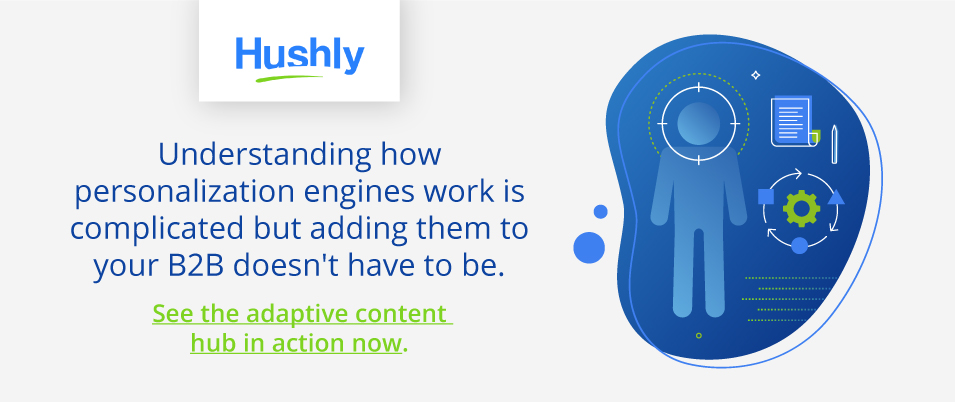Personalization isn’t just “nice to have” in B2B anymore – your B2B buyers expect it.
65% of buyers say they would consider switching brands if a company didn’t make any effort to personalize their interactions and content, which is 13% more than consumers.

Despite its importance, most B2Bs struggle to implement effective personalization strategies.
42% of B2B marketers admit they need to improve their personalized marketing. Meanwhile, research shows that 80% of organizations will abandon their data-driven personalization strategies by 2025 citing poor ROI and failure to properly use data.
A personalization engine driven by artificial intelligence and machine learning is the key to “winning” the personalization game.
Instead of working with massive data sets retroactively, an AI engine personalizes every experience in real-time. Here’s a look at how it works and how to implement it on your website.

Understanding the Algorithms that Drive a Personalization Engine
You encounter AI engines everywhere you go online. From Amazon and e-commerce sites to Spotify and Facebook, almost every app and website use a personalization engine to provide a unique experience.
Despite their prevalence in our daily lives, most marketers don’t know much about the basic algorithms that make AI engines hum along.
The models below are layered on top of each other as part of the “engine” to personalize every experience with different pieces of data.
Collaborative Filtering
The collaborative filtering algorithm watches your browsing behavior and compares it to previous visitors with a similar browsing behavior.
You see collaborative filtering in action with Amazon’s “customers who bought X also bought Y” recommendations.
Session-Based Similarity
With session-based similarity, the algorithm looks at the specific path you took. In other words, it pays attention to the order you consume content.
From there, machine learning compares it to visitors who took a similar path and uses it to recommend relevant pieces of content. In B2B terms, it also considers the stage of the buying cycle and nudges leads down the funnel through content recommendations.
Content Similarity
A content similarity model scans the copy and category of the content you browse and recommends similar pieces of content.
For example, the algorithm might notice a visitor is browsing nonprofit-related content and continue recommending other pieces of similar content.
Popularity, Importance, and Trending Models
You see these algorithms a lot when you first open your Netflix app.
For example, Netflix recommended everyone watch Tiger King. At first, Netflix deemed the show “important” as it was a Netflix original. As people started watching it, however, Tiger King showed up in the “trending” algorithm as well.
Your B2B personalization engine can use the same algorithms to make content recommendations as well. For example, case studies or eBooks you classify as “important assets” can show up first on everyone’s screen – no matter when you published them.

What are the Benefits of Using a Personalization Engine on Your B2B Website?
Simply put, B2B buyers expect a personalized experience from your website. How do the benefits express themselves?
- Relevant content experiences keep visitors on your website, thus reducing bounce rates.
- Personalization helps visitors learn about your brand and research.
- It allows leads to self-nurture and gently guides them down the sales funnel.
- Adding an AI engine to your B2B site can boost lead conversions by 51%.
How Can You Use the Best Personalization Engine on Your Website?
Now that you understand the basics of how AI personalization engines work, it’s time to learn a few tools to implement them in practice. Here’s what they look like on the user side.
Self-Nurturing Landing Pages
Say good-bye to dead-end landing pages for good.
Self-nurturing landing pages give your leads an endless stream of highly relevant content. Using the algorithms mentioned above, the landing page recommends content that’s not only relevant to a visitor’s browsing behavior but also guides them down the sales funnel.
Here’s a bonus. You don’t have to rely on capturing data through a form before you can start nurturing leads.
Self-nurturing landing pages let you un-gate your content and provide visitors with a sample. They can continue browsing samples of personalized eBooks, case studies, and blogs at their leisure. When they’re ready to download the full piece, they can simply provide a business email address and country.
The user doesn’t have to fill out their personal company details because AI fills in the gaps when it verifies the lead data.
Adaptive Content Hubs
Adaptive content hubs are your secret weapons for keeping visitors on your website.
Research shows that buyers want to binge on the content they find relevant. 58% of B2Bs say they would spend up to 20 minutes browsing relevant content. Meanwhile, 68% said they want to see content organized by pain points.
That’s where an adaptive content hub proves worthwhile. The adaptive content hub lets you organize content by pain point, vertical, or content type. Once a visitor starts browsing, the personalization engine takes over and continues recommending relevant content in an endless stream.
Engaging Exit-Intent Popups
Exit-intent popups are everywhere these days but most companies get them completely wrong.
No one wants to fill out a lead magnet form as they try to tab away from your website.
Instead, think about why they came to your website in the first place: to consume your content.
An AI engine lets you employ exit-intent popups people actually engage with. As someone moves the cursor to leave your site, they’ll get a popup filled with relevant content recommendations based on the content they consumed while on your website.
Rather than asking your visitors to complete a task and supply personal information as they try to leave, personalized exit intent popups provide value.
Create the Experience Your Leads Expect with Personalized Content
Adding a personalization engine to your B2B website doesn’t have to be a huge undertaking. Hushly makes it easy to implement an AI engine and put it to work right away and skyrocket lead conversions by 51%
Understanding how personalization engines work is complicated but adding them to your B2B site doesn’t have to be. See the adaptive content hub in action now.

